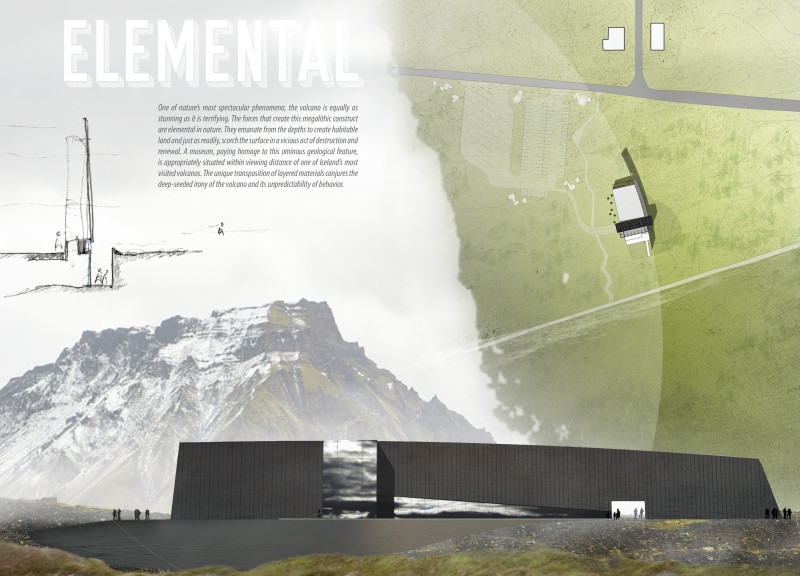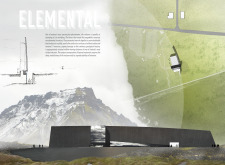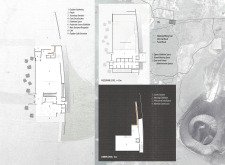5 key facts about this project
The design project near one of Iceland's well-known volcanos functions as a museum that explores the characteristics of volcanic activity. It is situated strategically to enhance views of the volcano itself, allowing visitors to appreciate the power of nature firsthand. The design concept centers on the relationship between the built structure and the natural landscape, bridging the gap between human experiences and geological forces.
Site Organization
The layout emphasizes visitor interaction and movement. An outdoor gathering area with a firepit serves as a space for socializing, fostering a sense of community among visitors. Multiple entrances create efficient pathways throughout the building, allowing for easy navigation between different sections. This thoughtful organization enriches the overall experience, guiding people through various attractions within the museum.
Exhibition Spaces
The design includes a mix of exhibition spaces that can host both permanent exhibits and temporary displays. This flexibility allows the museum to adjust its offerings based on educational goals or special themes. Features like viewing wells and tiered seating provide intimate experiences with exhibitions, encouraging deeper engagement with the displayed items. Each area is carefully designed to tell a story and connect visitors to the theme of volcanic activity and its effect on the environment.
Materiality and Aesthetics
Material selection contributes significantly to the project’s vision. Anthrazinc facade panels are used to create a reflective surface that aligns the building with its natural surroundings. Dark tinted glazing helps achieve a warm, inviting interior that stands out at night. Copper cladding is incorporated at various points, adding depth and texture to the design. These materials enhance both the visual appeal and functional aspects of the museum.
Architectural Form
The building's form suggests a sense of movement, mirroring the dynamics of volcanos. The design prioritizes transparency and natural light. Large windows and open spaces create a connection between inside and outside, fostering a dialogue about nature and human influence. Visitors can often see the surrounding volcano, reinforcing the educational mission of the museum.
The play of light through the copper accents against the reflective facade emphasizes the relationship between the structure and its environment, reinforcing the themes of nature’s strength and the impact of geological features on human life.






















































